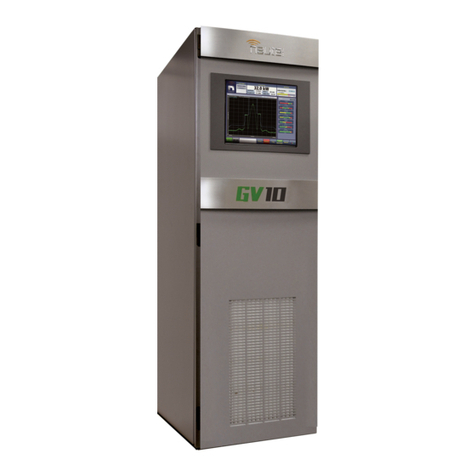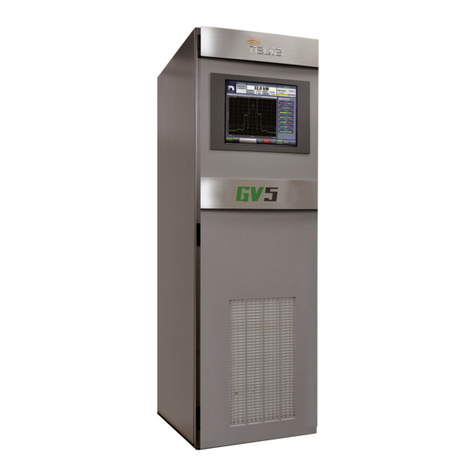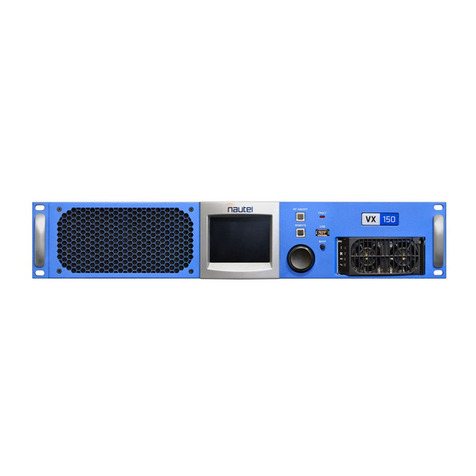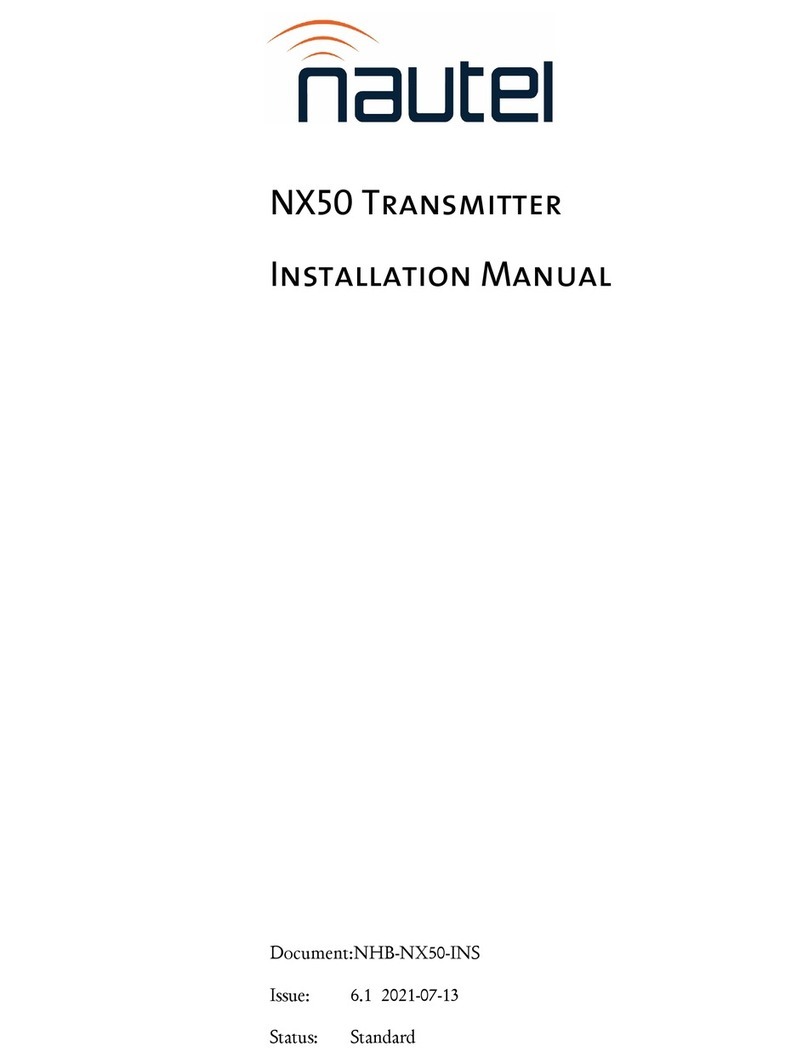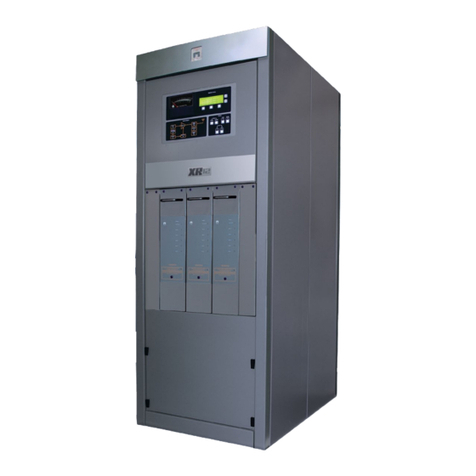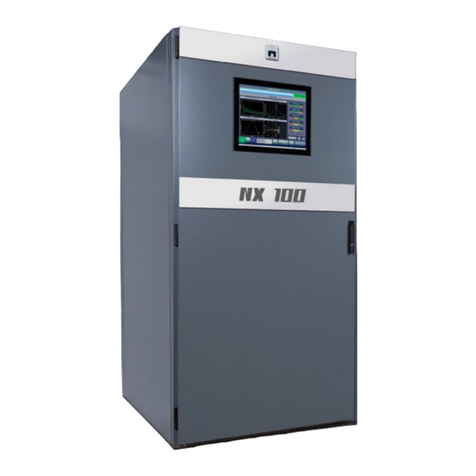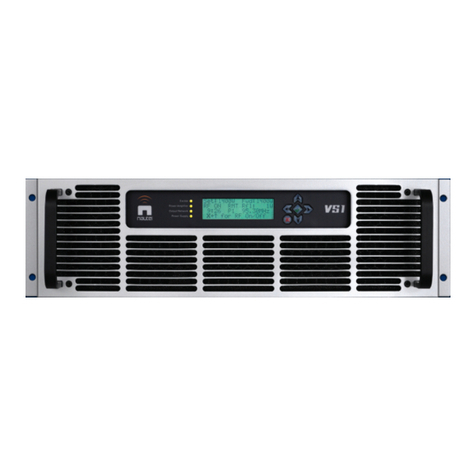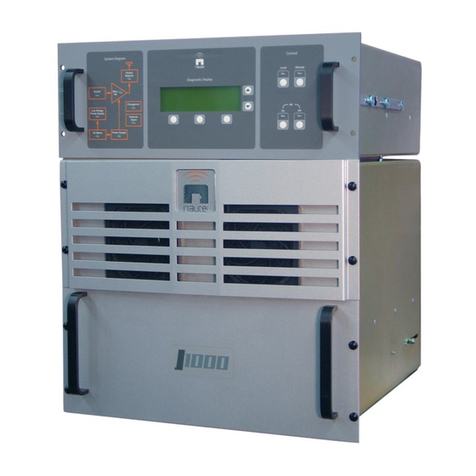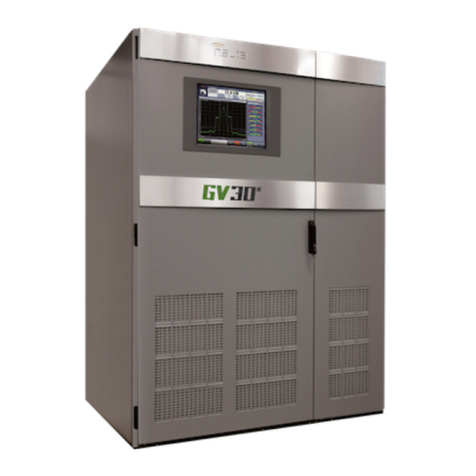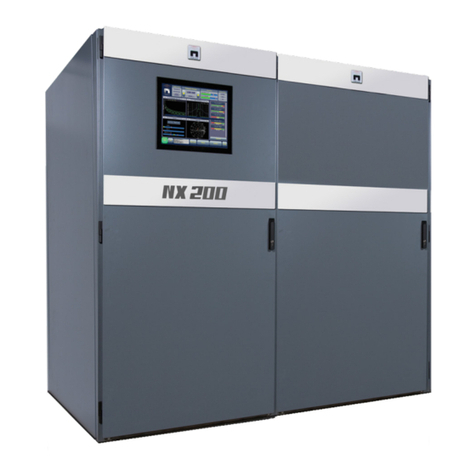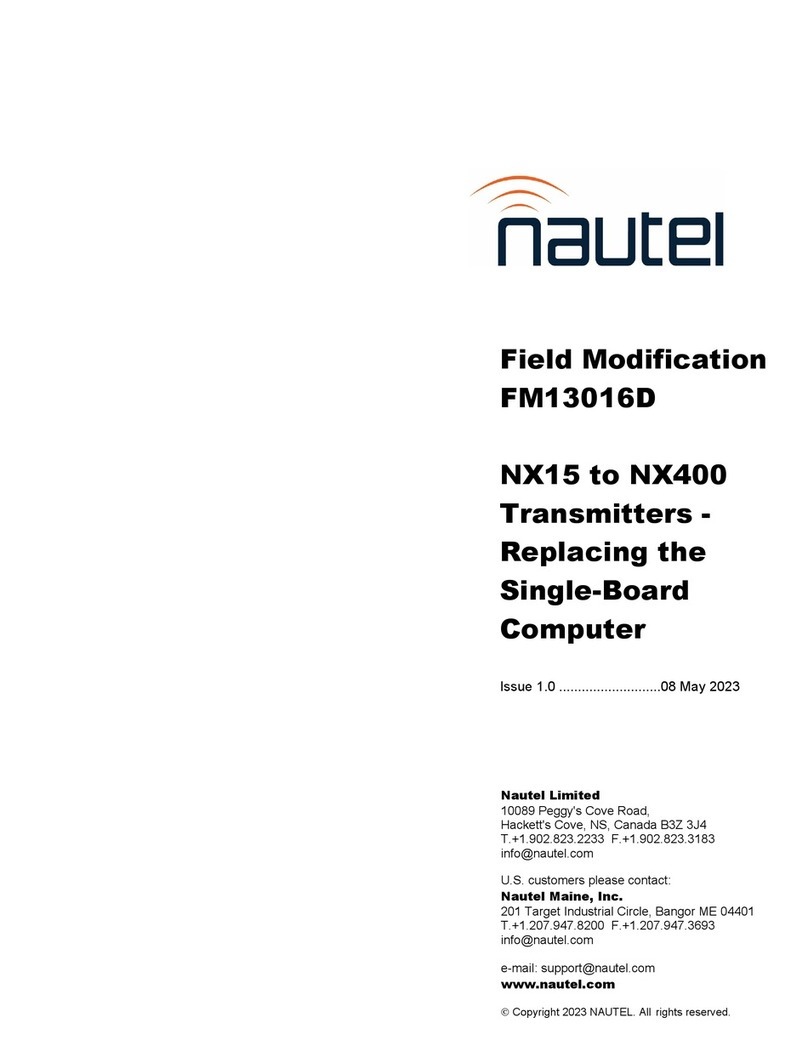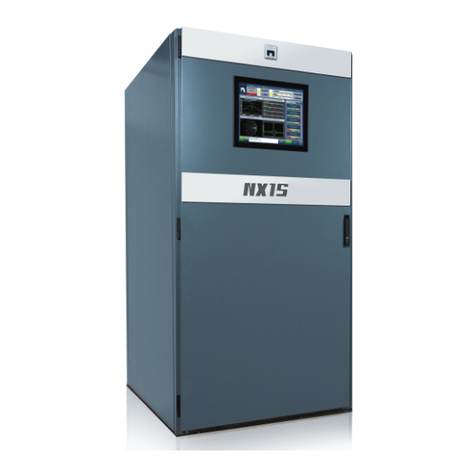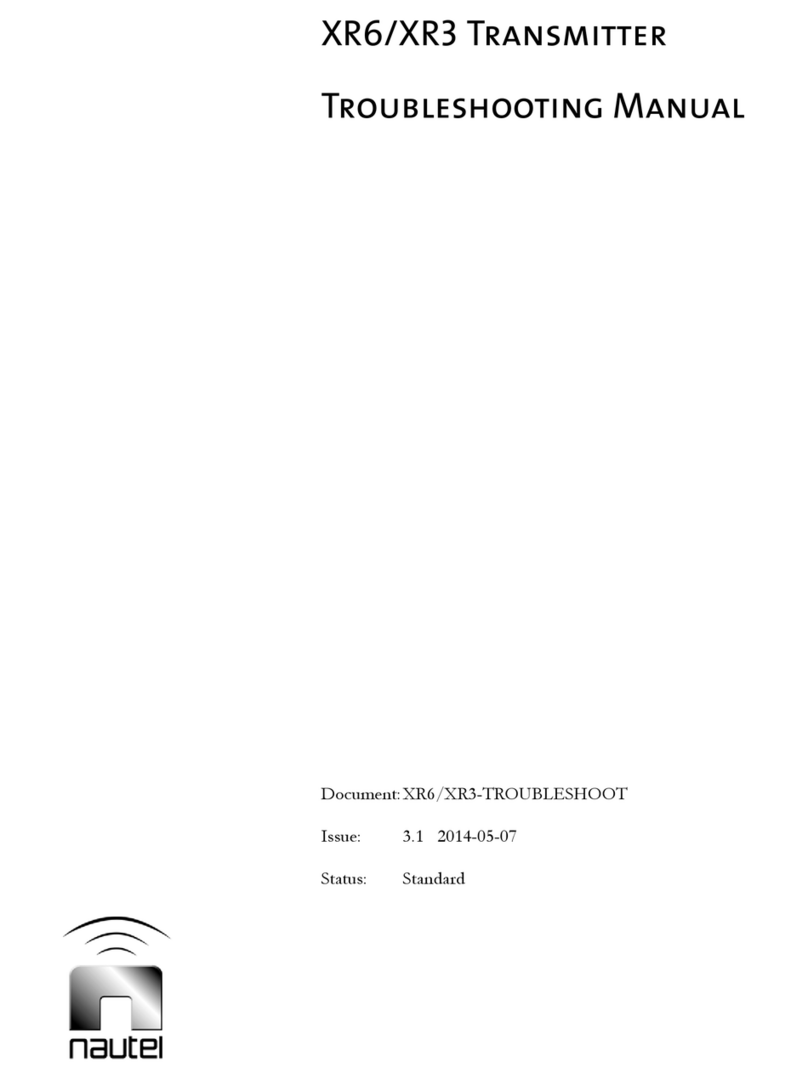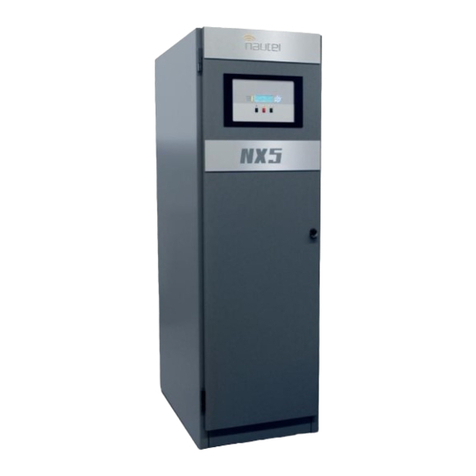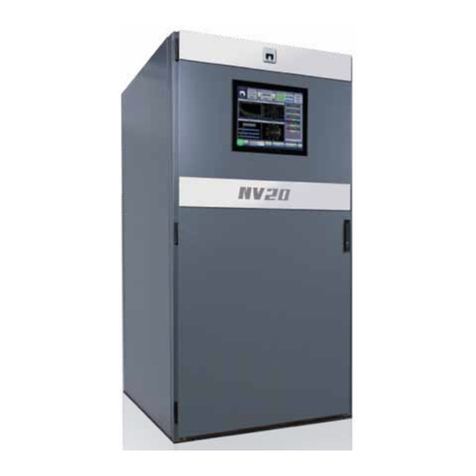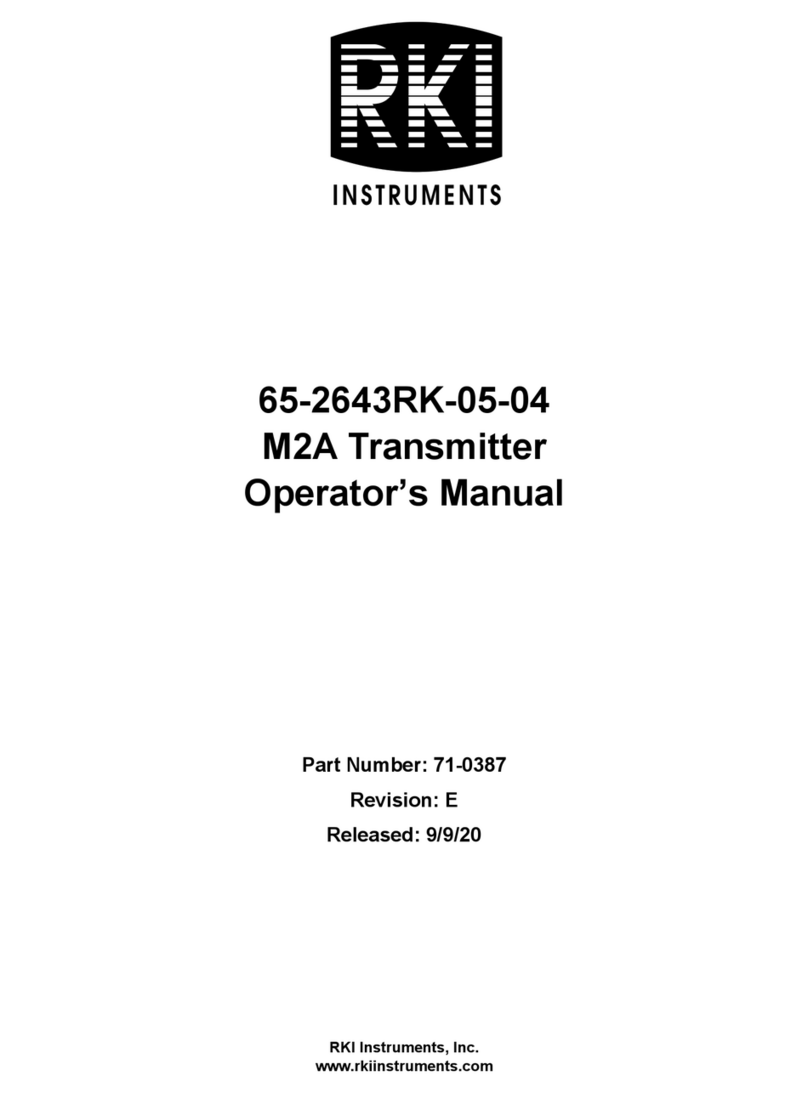
NX300 Operations and Maintenance Manual Description
Page 1-2 Issue 3.0 2012-11-01
The secondary of the power transformer is applied to the SCR rectifier assembly to create the
transmitter’s B+ voltage. The output of the rectifier assembly is fed through the Hall Effect current
sensor, which supplies a dc current signal to the rack interface PWB. The rectifier assembly output is
applied to the B+ distribution assemblies, which then provide the B+ voltage to the RF power
modules, and a B+ sample to the rack interface PWB.
One phase of the power transformer’s secondary is also used to provide a source for the low voltage
dc power supplies and an ac sample for the rack interface PWB. The low voltage power supply
outputs (+48 V, +15 V and +12 V) are distributed throughout the transmitter via the rack interface
PWB.
Ac power transformer
The NX300’s power transformer can be set to use a range of input voltages. See Section 4,
“Connecting transformer taps/load wiring” on page 4-1 in the NX300 Installation Manual.
Exciter stage
See electrical schematic SD-2 and Figure 1.1 on page 1-3. The exciter stage consists of digital AM
exciter PWBs A (A11A2) and B (A11A3), RF drive distribution PWB (A16), and PDM distribution
PWB (A17). The dual digital AM exciter PWBs provide two independent exciter sections (A and B),
which can be selected automatically or by local or remote control. The control/interface PWB acts as
an interface point for audio inputs and RF drive and PDM outputs.
Digital AM exciter PWBs
Digital AM exciter PWBs A (A11A2) and B (A11A3) accept audio or IBOC inputs from an
integrated DRM exciter or Exgine card and generate fully digital RF drive carrier frequency sources
and interphase PDM drive signals for the power amplifiers and modulators in the RF power modules.
Audio input can be applied as as analog (balanced or AES-EBU) or digital (I/Q in AES/EBU or
CMOS format). All audio inputs are digitized, as necessary, and sample rate converted. A DSP
provides initial data conditioning, including the initial filtering and interpolation of incoming audio or
digital radio data.
An FPGA generates the digital PDM signals and synthesizes the carrier frequency RF drive signal. It
also performs digital up-conversion, reverse path demodulation and downconversion and B+ voltage
compensation.

